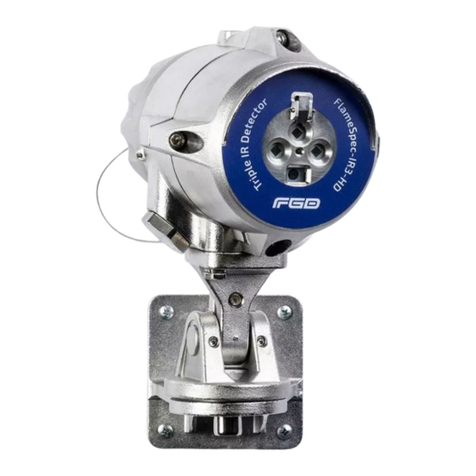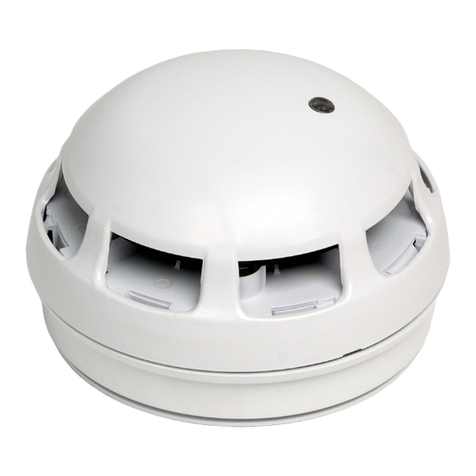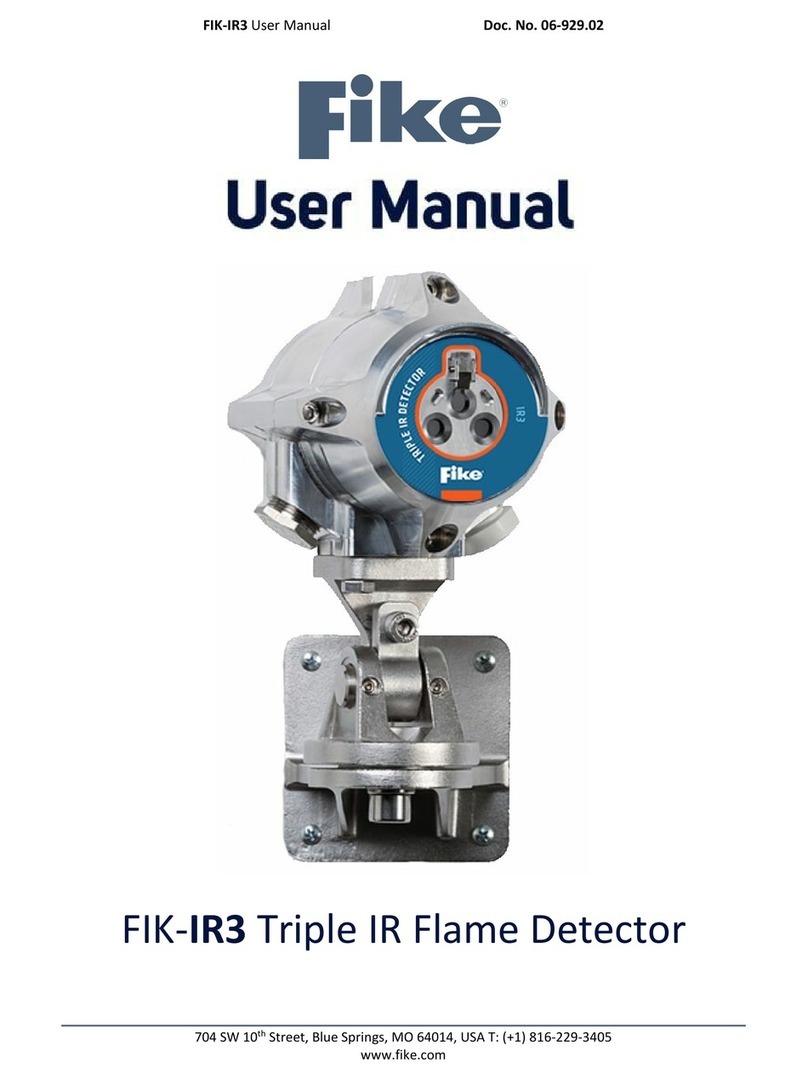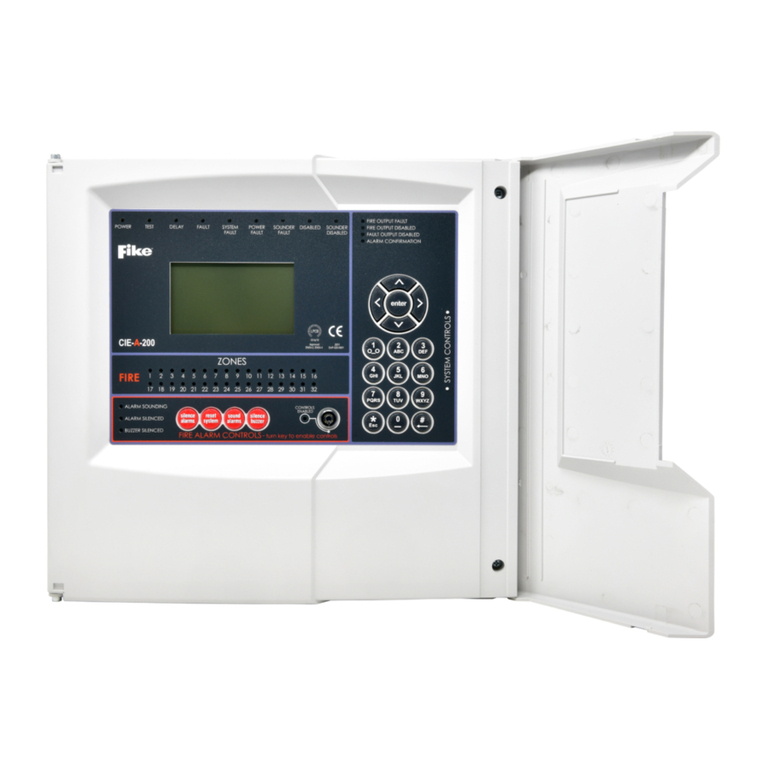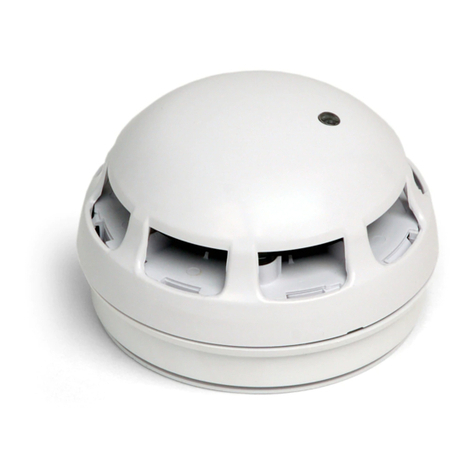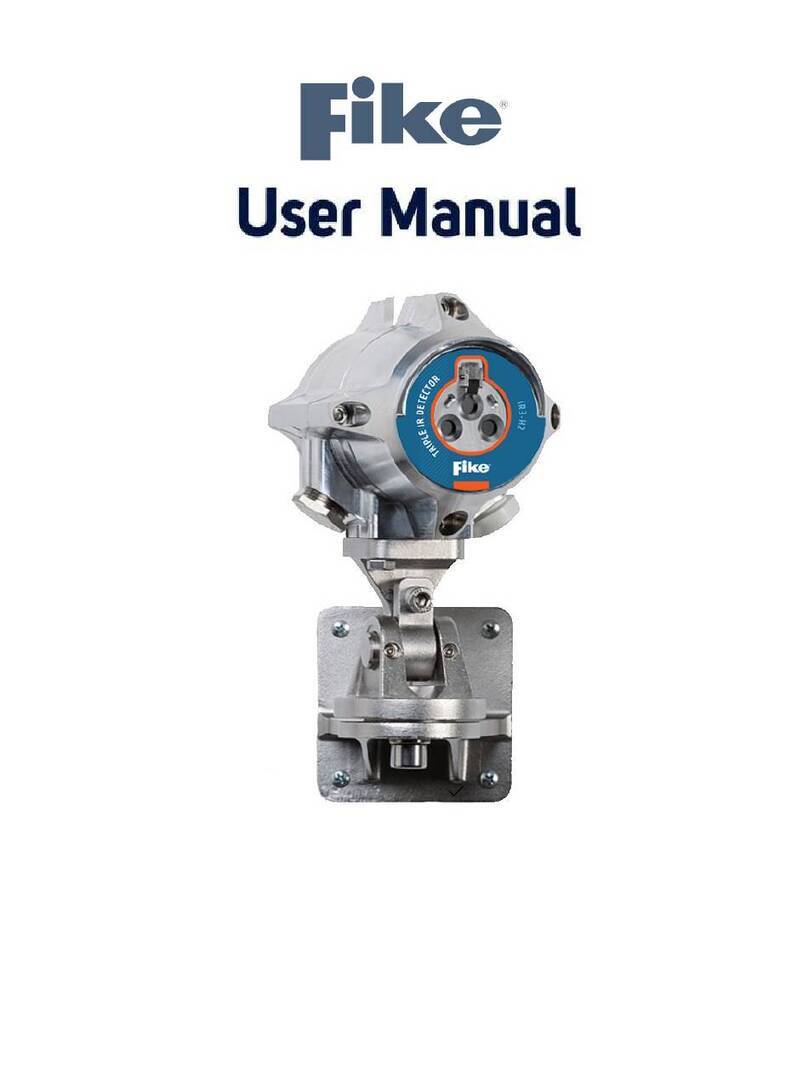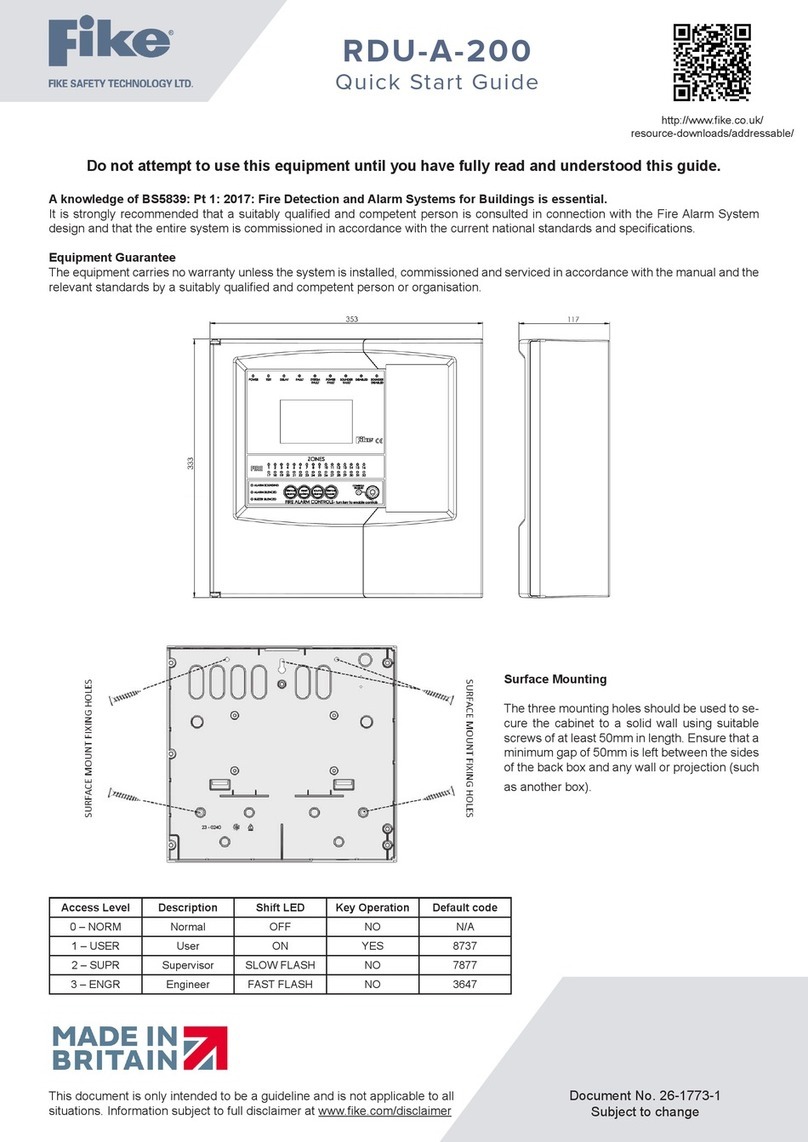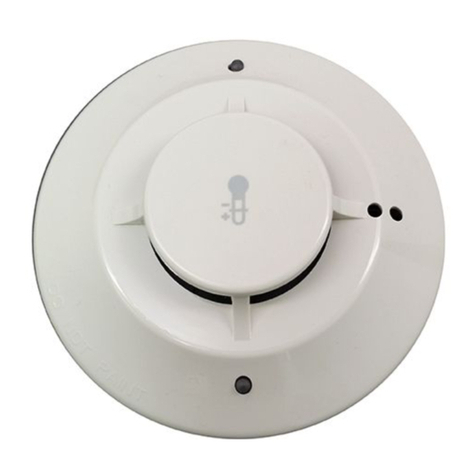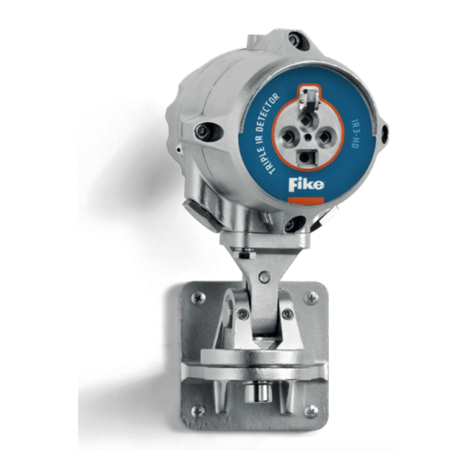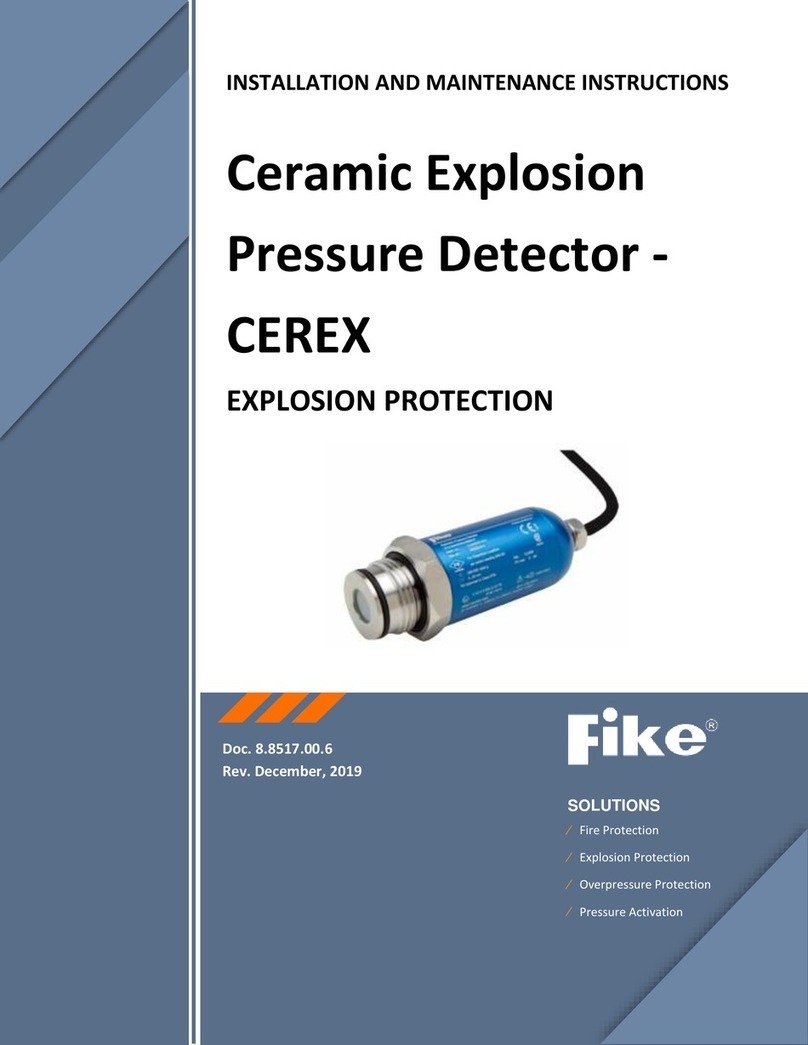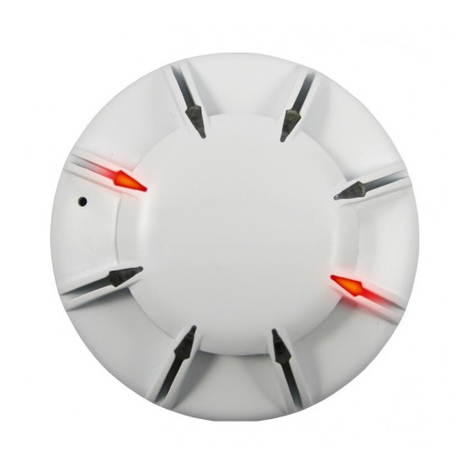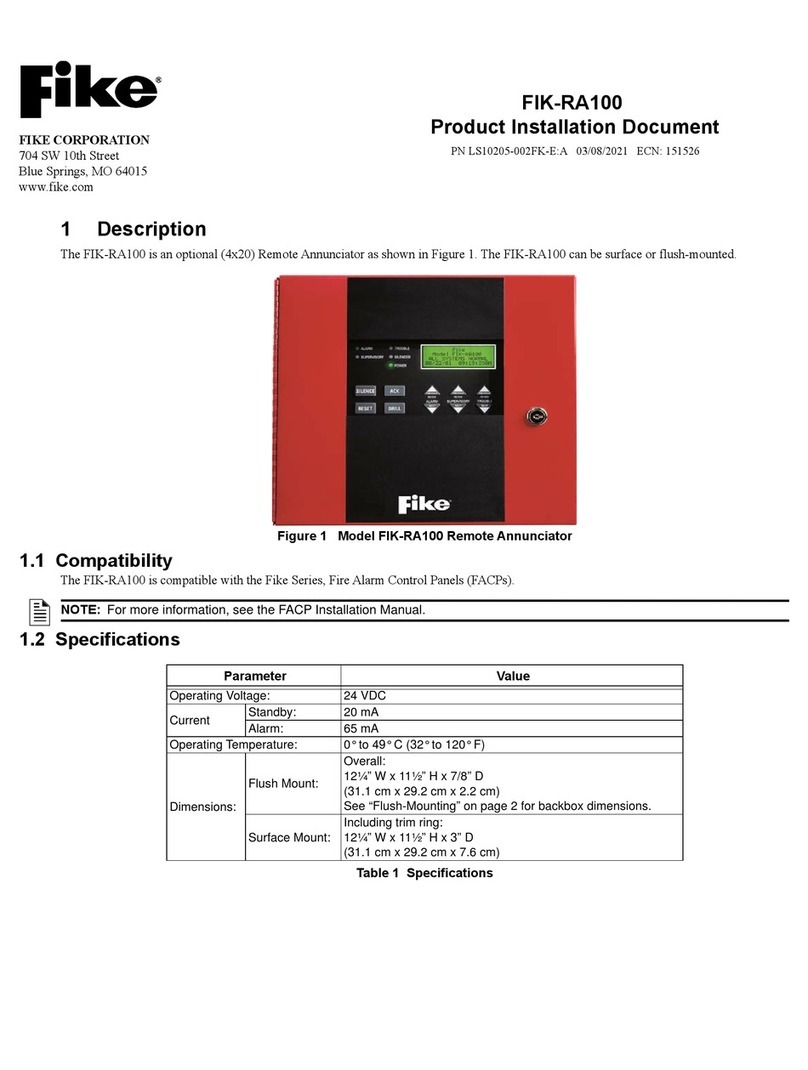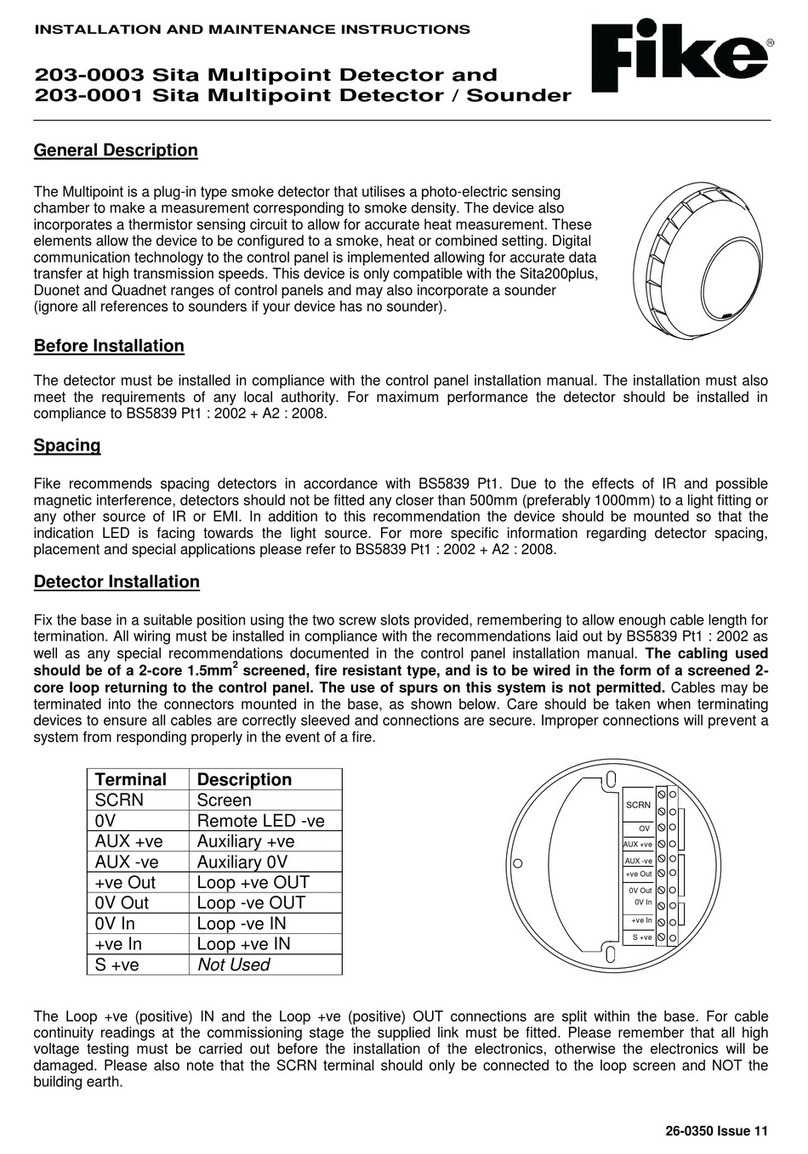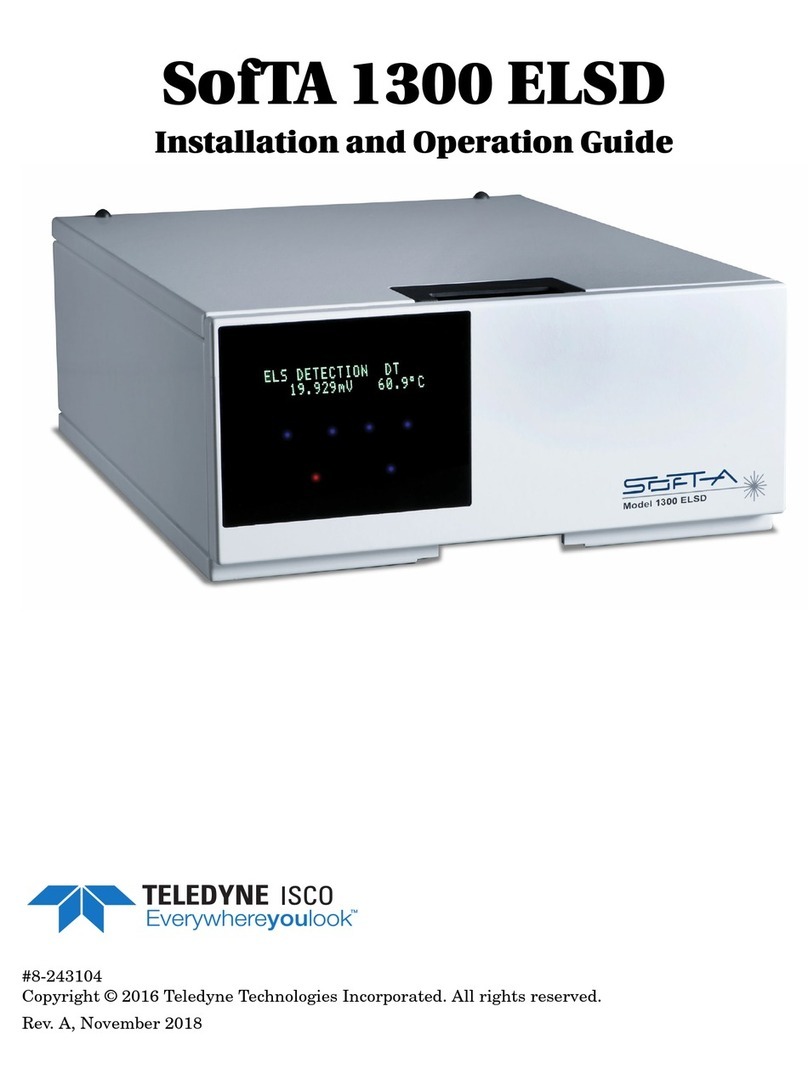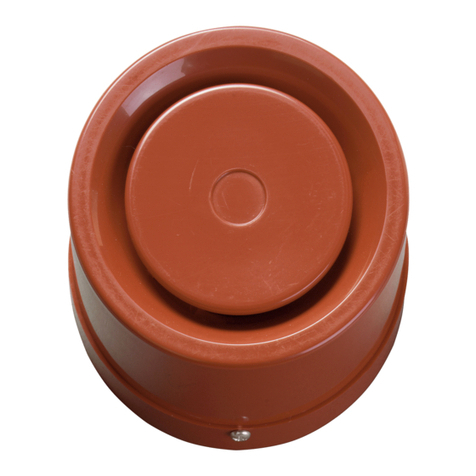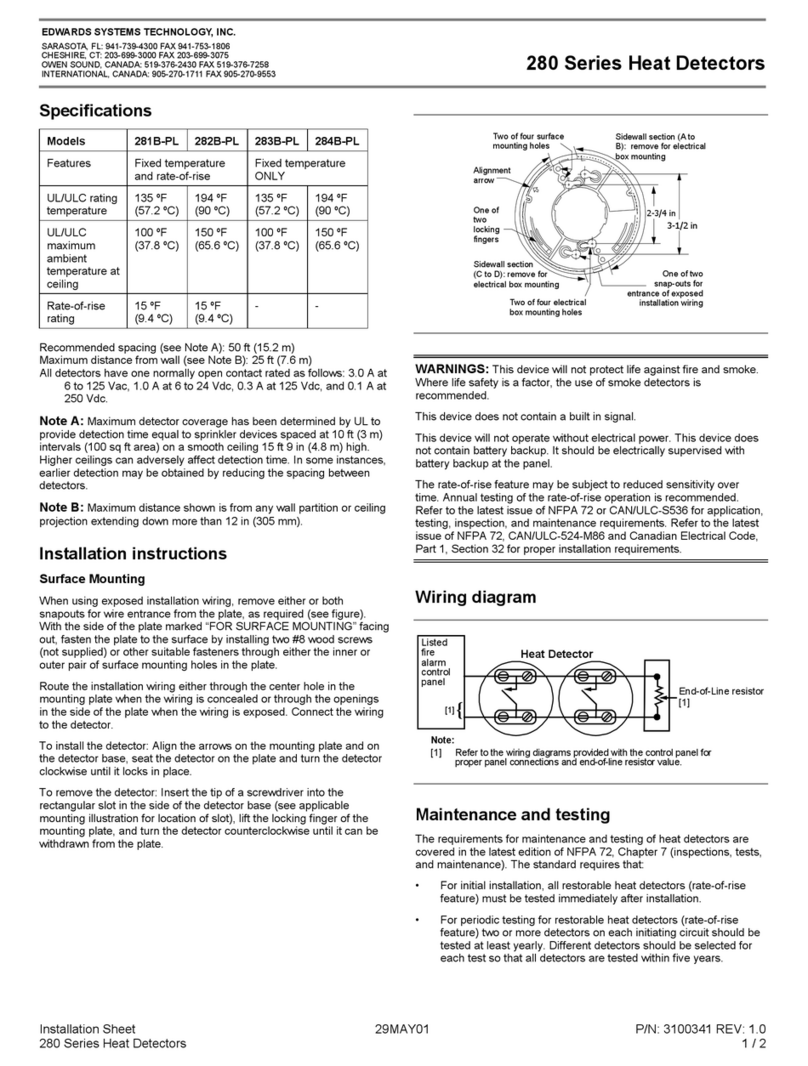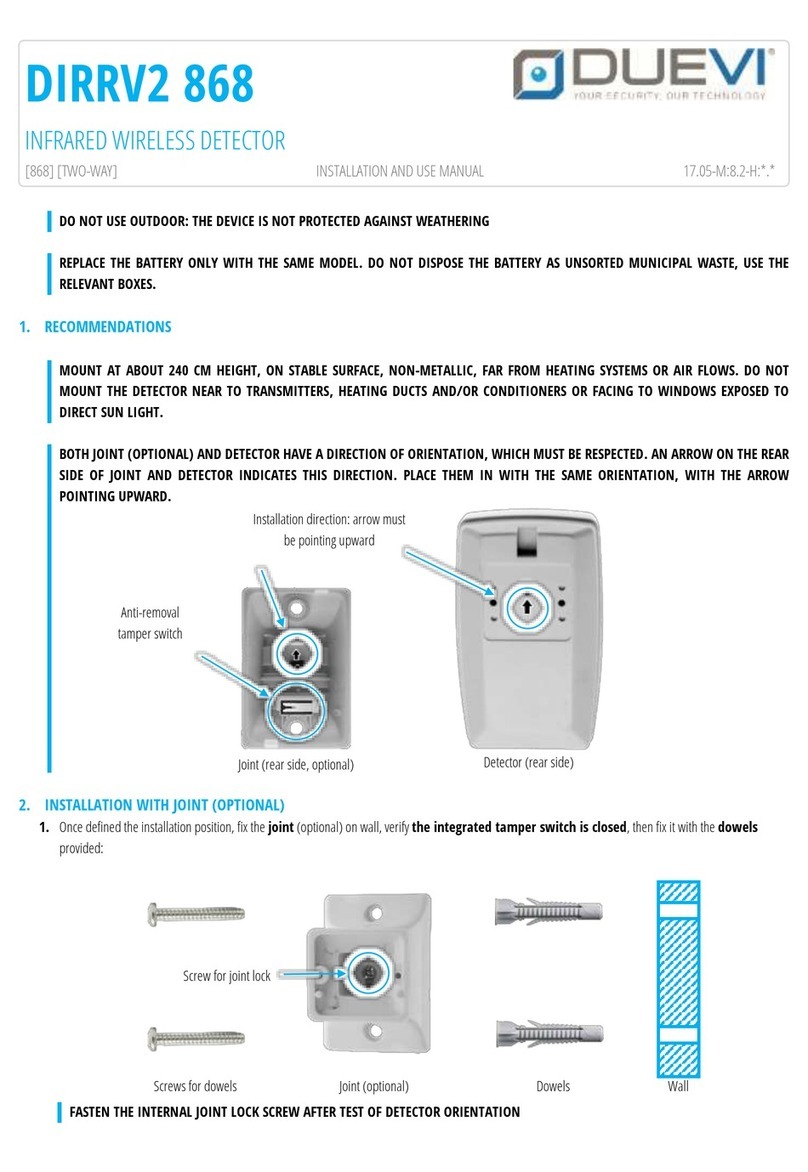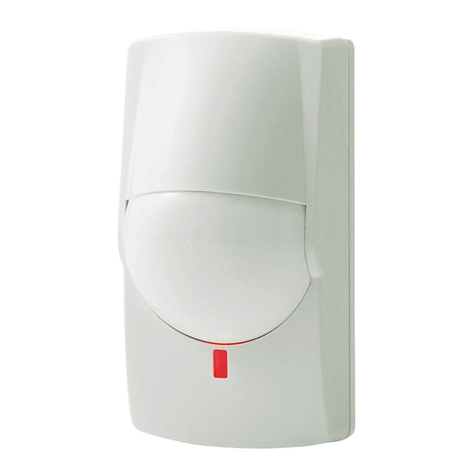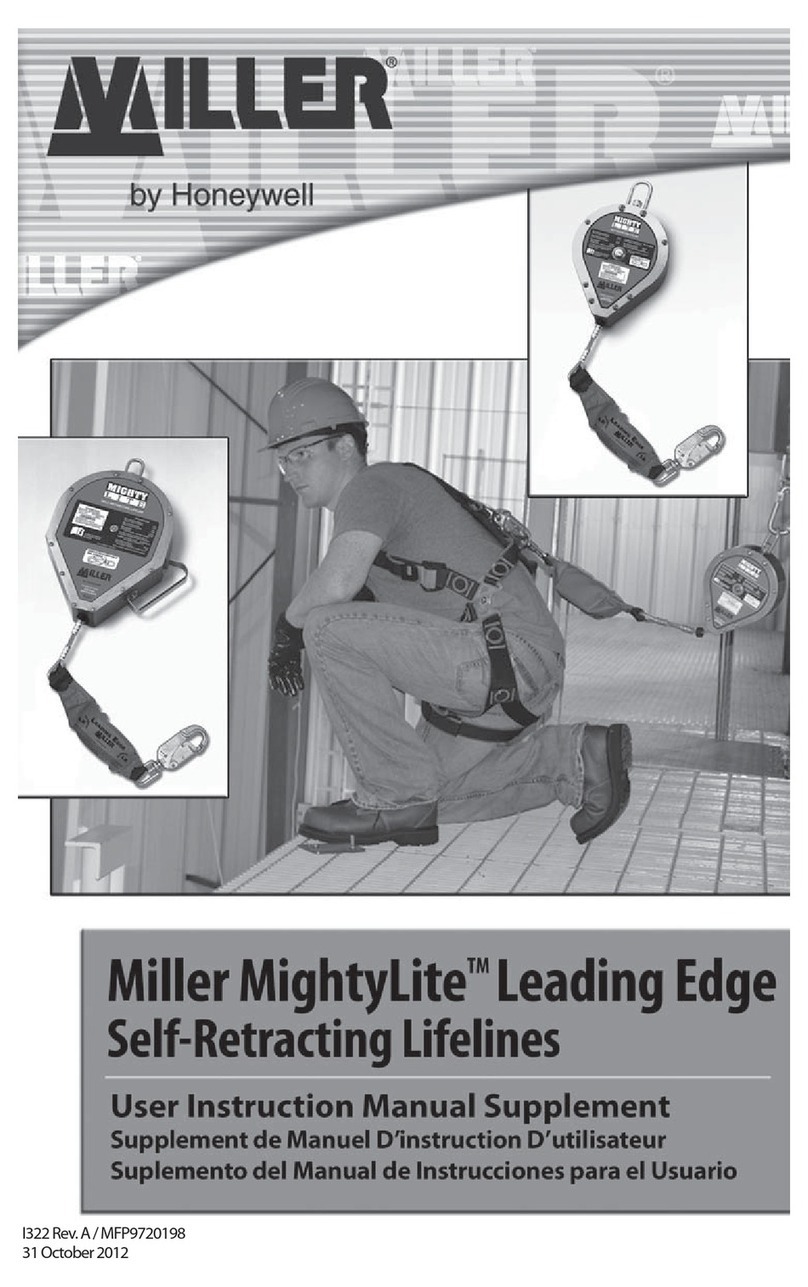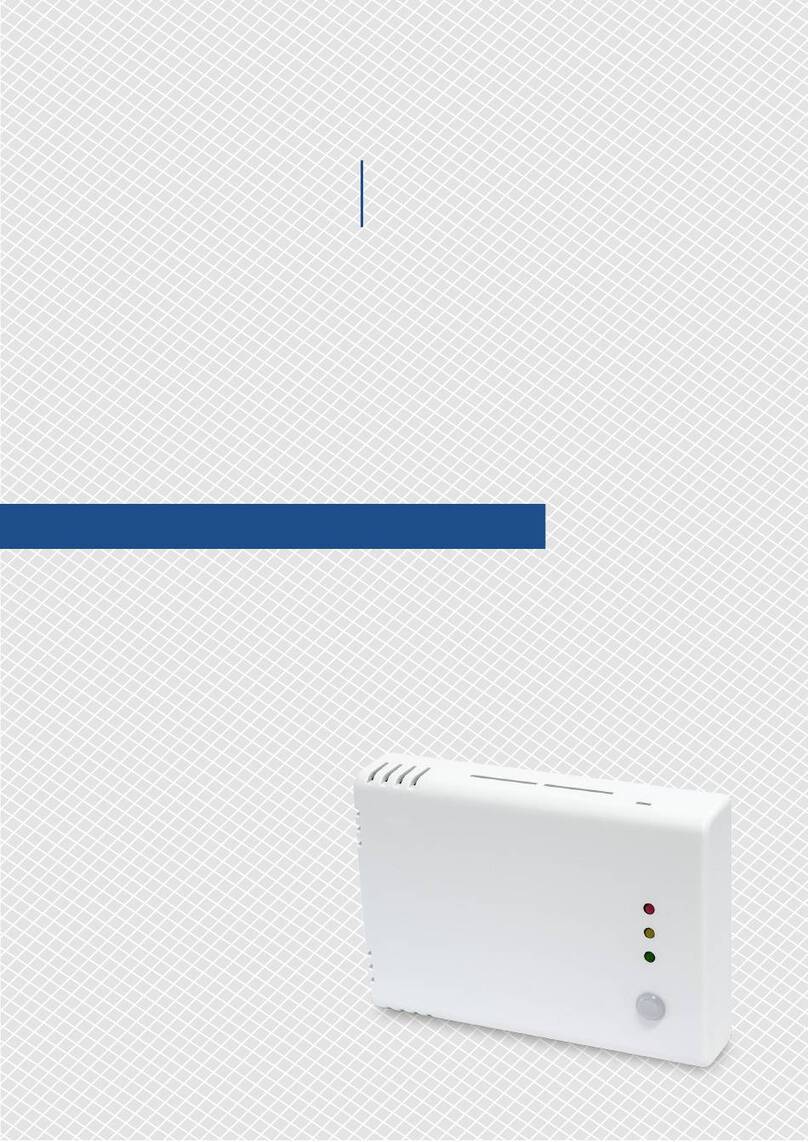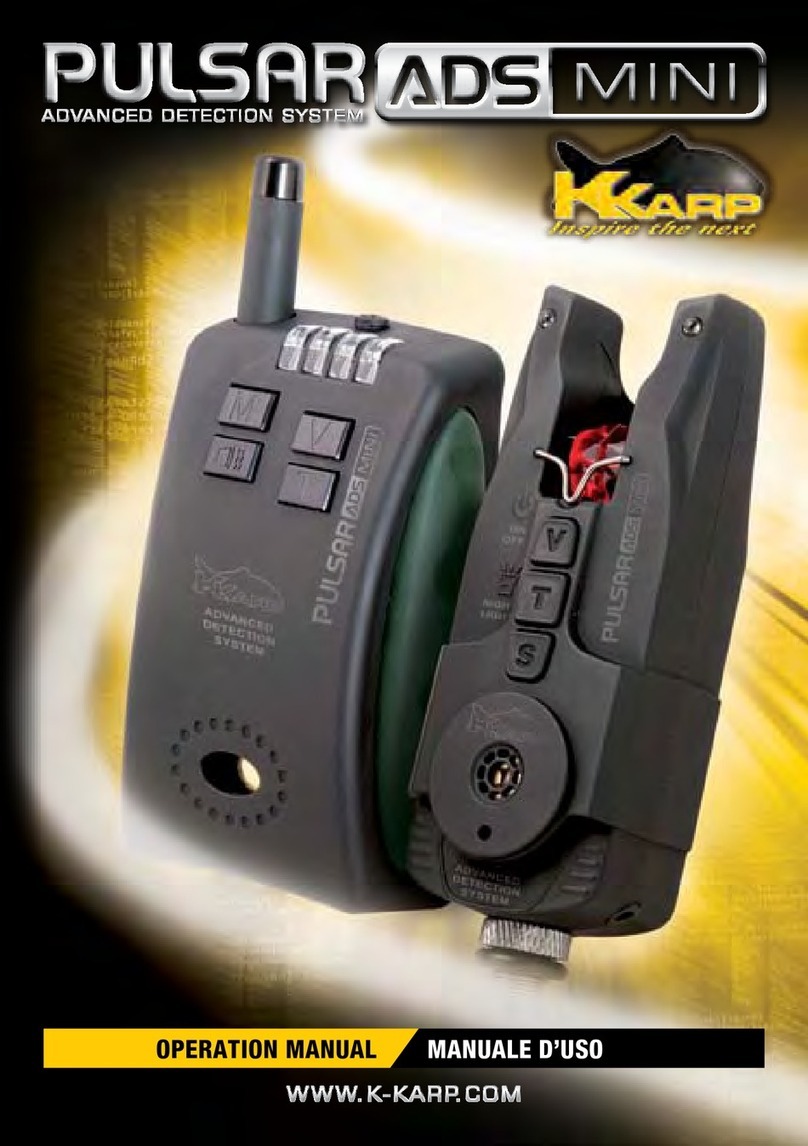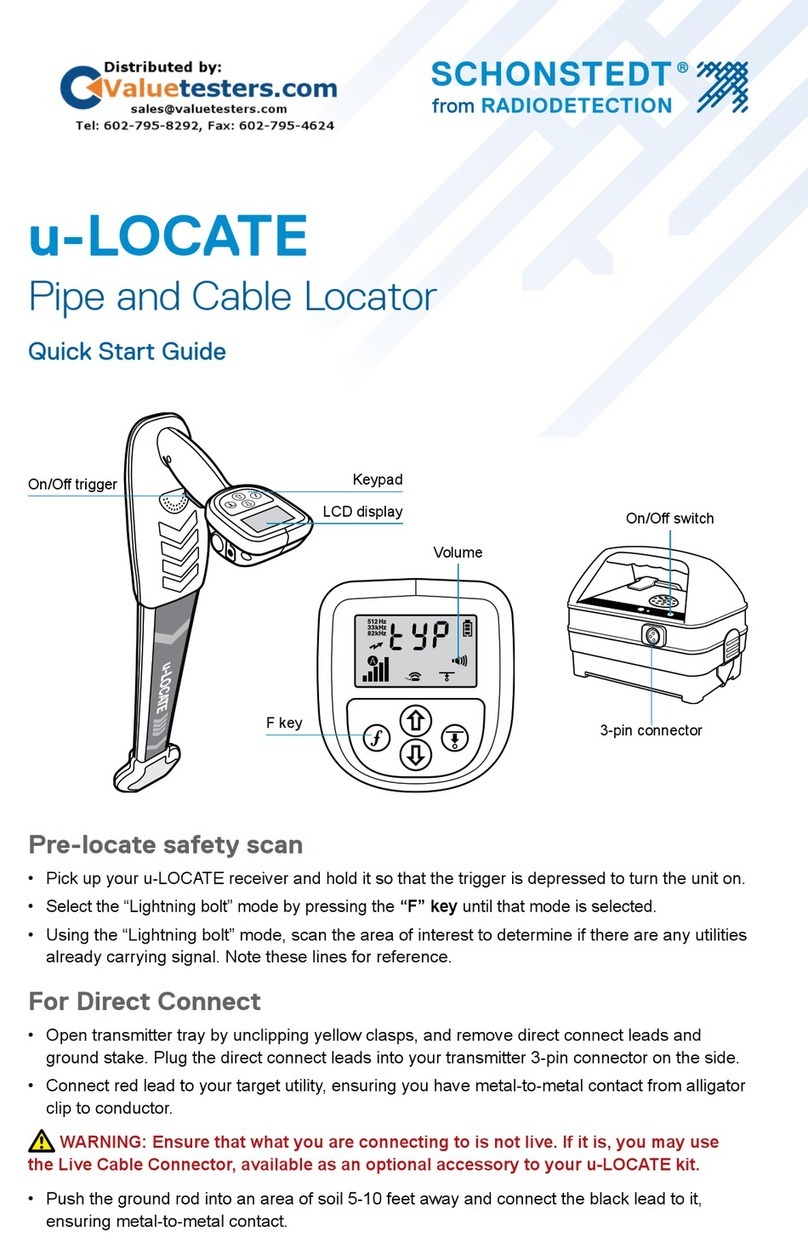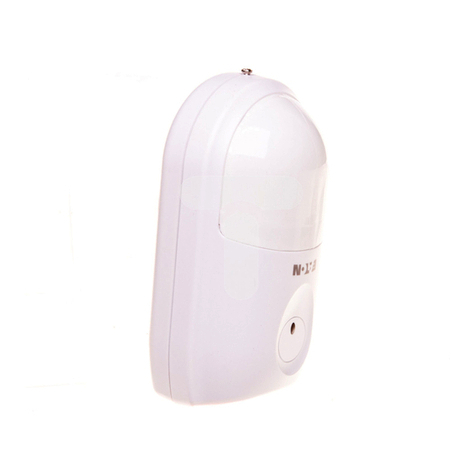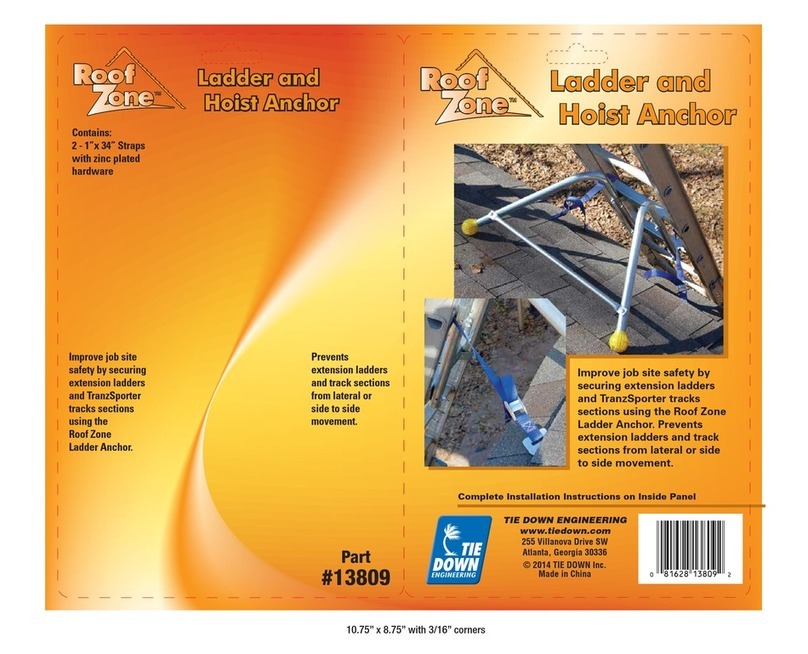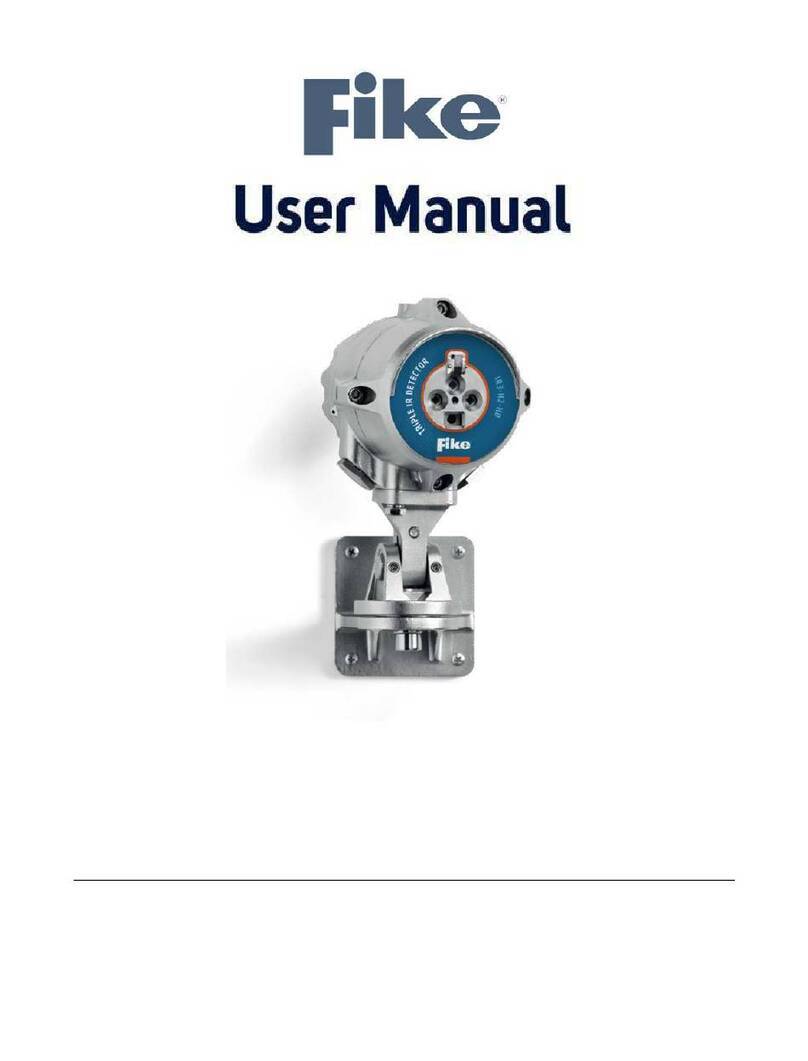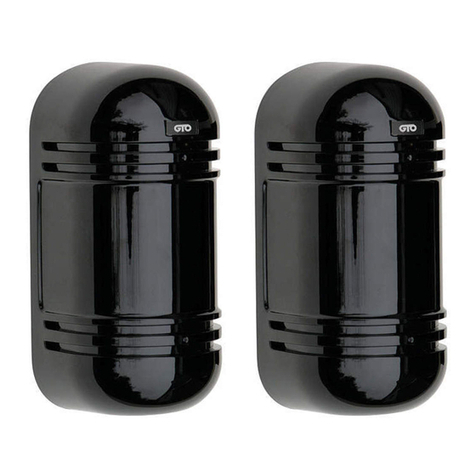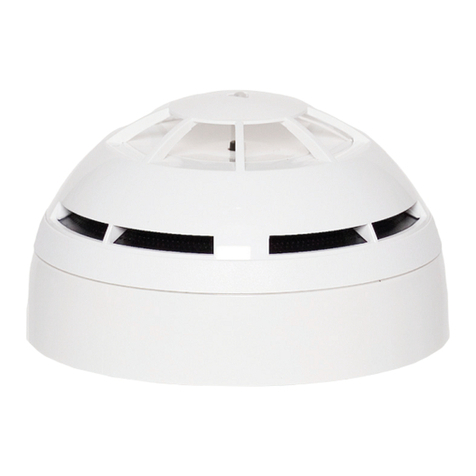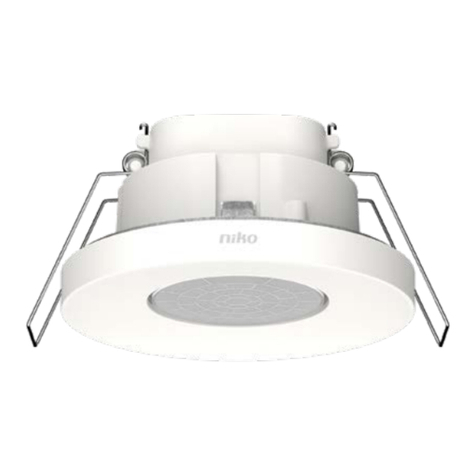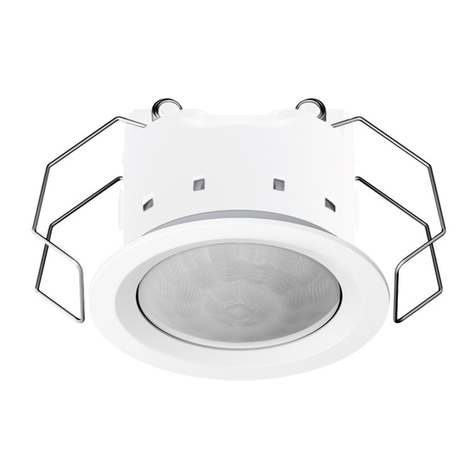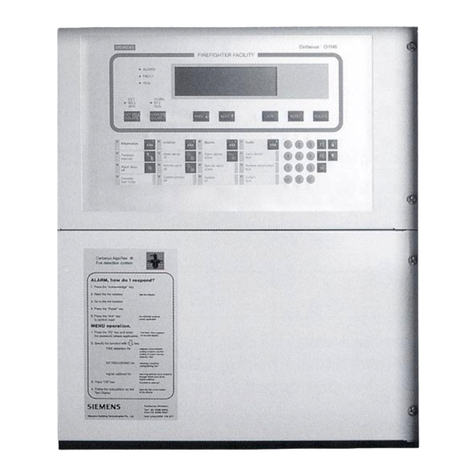
This sensor must be installed in compliance with the control panel system
installation manual and the SWIFT Wireless Manual. The installation must
meet the requirements of the Authority Having Jurisdiction (AHJ). Sensors
offer maximum performance when installed in compliance with the National
Fire Protection Association (NFPA); see NFPA 72.
GENERAL DESCRIPTION
Models FIK-W-PHOTO and FIK-W-ACCLIMATE are plug-in type smoke sensors
that combine a photoelectronic sensing chamber with wireless communica-
tion. The sensors transmit a digital representation of smoke density through
a wireless mesh to a gateway. The gateway will send the information to the
panel when requested. Rotary dial switches are provided for setting the sen-
sor’s address. (See Figure 1.)
Two LEDs on the sensor are controlled by the panel to indicate sensor status.
Model FIK-W-ACCLIMATE combines a photoelectronic sensing chamber and
135°F (57.2°C) fixed temperature heat detector. The FIK-W-ACCLIMATE also
transmits an alarm signal due to heat (135°F fixed) per UL 521.
Fike panels offer different features sets across different models. As a result,
certain features of the FIK-W-PHOTO and FIK-W-ACCLIMATE may be avail-
able on some control panels, but not on others. The possible features avail-
able in the FIK-W-PHOTO and FIK-W-ACCLIMATE, if supported by the control
panel are:
• The panel controls the LED operation on the sensor. Operational modes
include red, green and amber colors in various solid or blink patterns.
Please refer to the operation manual for the UL listed control panel for specific
operation of the FIK-W-PHOTO and FIK-W-ACCLIMATE.
The FIK-W-PHOTO and FIK-W-ACCLIMATE require compatible addressable
communications to function properly. Connect these sensors to listed-compat-
ible control panels only.
SPACING
Fike recommends spacing sensors in compliance with NFPA 72. In low air
flow applications with smooth ceilings, space sensors 30 feet apart. When
using the FIK-W-ACCLIMATE as a heat detector in FM3210 compliant applica-
tions, space sensors 20 feet apart. For specific information regarding sensor
spacing, placement, and special applications, refer to NFPA 72 or the System
Smoke Detector Application Guide, available from System Sensor.
Wireless technologies can exhibit communication disruption if devices are
spaced too close together. To avoid this form of disruption, SWIFT devices
should not be placed closer than 2 feet (60 cm) apart without an intervening
structure.
NOTE: Do not attach the base and detectors to temporary structures such as
removable ceiling tiles such that the placement could be altered. To prevent
I56-6960-000
INSTALLATION AND MAINTENANCE INSTRUCTIONS
changes in device placement, permanently secure the structure or mount the
detector across the ceiling panel support as shown in Figure 2.
BATTERY REPLACEMENT
Low battery levels on the wireless devices are displayed as a trouble on the
FACP. Therefore when the message “TROUBLE BATTERY LOW” is displayed,
replace the battery in the device. This message is an indication that approxi-
mately one week of battery life remains.
To replace the batteries in a wireless device use the following steps:
1. Have 4 CR123A (or DL123A) batteries available
2. Remove the detector from the base.
3. Open the battery compartment refer to Figure 3. Note: The battery com-
partment cover may be left attached at the hinges during battery replace-
ment.
4. Remove the used batteries and replace with new batteries. The battery
compartment is designed such that the batteries can only align in the ap-
propriate direction. Do not force the batteries into the openings.
5. Replace the battery compartment cover.
6. Return the device to its original location.
Dust covers provide limited protection against airborne dust particles during
shipping. Dust covers must be removed before the sensors can sense smoke.
Remove sensors prior to heavy remodeling or construction.
FIGURE 1. ROTARY ADDRESS SWITCHES
TENS ONES
9
10
11
12
13
14
15
8
7
6
5
4
3
210
9
8
7
6
5
4
3
210
C0162-00
SPECIFICATIONS
Operating Voltage Range: 3.3 VDC
Standby Current: 210µA @ 3.3 VDC (one communication every
23.8 seconds with LED blink enabled)
Maximum Alarm Current (LED on): 5 mA @ 3.3 VDC LED on
Maximum Transmit RF Power: 17dBm
Radio Frequency Range: 902-928 MHz
Operating Humidity Range: 10% to 93% Relative Humidity, Non-condensing
Operating Temperature Range: 32°F to 120°F (0°C to 49°C), FIK-W-PHOTO;
32°F to 100°F (0°C to 38°C), FIK-W-ACCLIMATE
Air Velocity: 0 to 4000 ft/min
Battery Type: 4 Panasonic CR123A or 4 Duracell DL123A
Battery Life: 2 year minimum
Battery Replacement: Upon TROUBLE BATTERY LOW display and/or during annual maintenance
Height: 2.4˝ (61 mm) installed in B210W Base
Diameter: 6.0˝ (152 mm) installed in B210W Base
Weight: 9.2 oz. (261 g) installed in B210W base with 4 batteries
R
704 SW 10th Street
Blue Springs, MO 64015
Phone: 816.229.3405; Fax: 816.228.9277
www.fike.com
FIK-W-PHOTO and FIK-W-ACCLIMATE
Wireless Intelligent
Photoelectric Smoke Sensors
http://www.fike.com/06-912
Fo
r system/product documentation including
installation, operation, and maintenance,
scan QR code or enter URL provided.
1 I56-6960-000
1/15/2021






